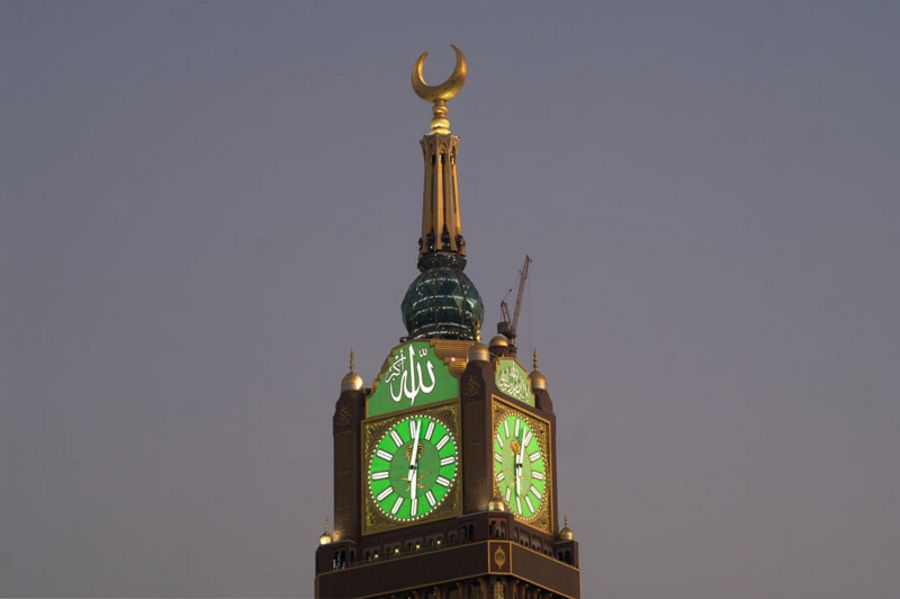
The largest clock in the world was built in Germany
Share
German medium-sized company builds the world's largest tower clock in Mecca
Superlative time display
It's not as if the traditional Calw-based company Perrot Turmuhren und Läuteanlagen (Turm Clocks and Bell Systems) had no previous experience with large-scale projects. The largest tower clock to date, with a dial diameter of 12.5 meters, also came from the family-run business with 30 employees. But when the phone rang seven years ago, it quickly became clear that the previous record would be significantly exceeded.
The architectural firm SL Rasch GmbH, based in Leinfelden-Echterdingen near Stuttgart, had inquired at the time whether it would be possible to build an even larger clock system – on the tower of the Mecca Royal Clock Tower Hotel in the Saudi Arabian pilgrimage city of Mecca. At 601 meters, the hotel complex is currently the second tallest and largest building in the world by volume.
Specialists for technically difficult constructions
The background: SL Rasch Managing Director Dr. Bodo Rasch and his team have built up an excellent reputation in the Arab world and Asia over decades with regard to technically sophisticated designs that are simultaneously good-looking, easy to operate and easy to maintain.
A particular challenge for SL Rasch and Perrot was the realization of the Makkah Clock on behalf of the largest construction company in the Arab world. SL Rasch developed the technical specifications and design of the tower clock, but the Calwer-based company was responsible for planning, production, and assembly. Expert teams were formed from both companies to realize the demanding customer requirements.
Dials, numbers and hands in gigantic dimensions
For example, the four clock faces posed a challenge for the experts: Over the course of the planning process, their diameter grew from an initial 16 meters to a gigantic 43 meters at the end. This was not the only time Perrot's expertise, acquired over 150 years, played a decisive role.
Another example are the hands: The numbers alone are 7 meters long, but the hour hands (17 meters) and minute hands (22 meters) are far longer. Each hand has a total weight of up to 7.5 tons.
The problem: the very high wind loads at the height of over 400 meters where the tower clock was to be installed. The tips of the hands could only fluctuate minimally to avoid damaging each other or the clock face. Therefore, a shape was designed for the hands that offers as little surface area as possible for the wind to attack, reducing turbulence to an absolute minimum.
Ton-heavy drives for the next 100 years
Another challenge was the drive: It had to be designed to not only withstand the weight of the hands and the high wind loads, but also to run for more than 100 years. Weighing approximately 21 tons, the result was the largest and heaviest drives ever built for tower clocks.
After more than four years of construction, which was needed to realize the major project, the time had finally come and the Saudi King Abdul Aziz ceremoniously inaugurated the Makkah Clock, which is visible within a radius of eight kilometers.

